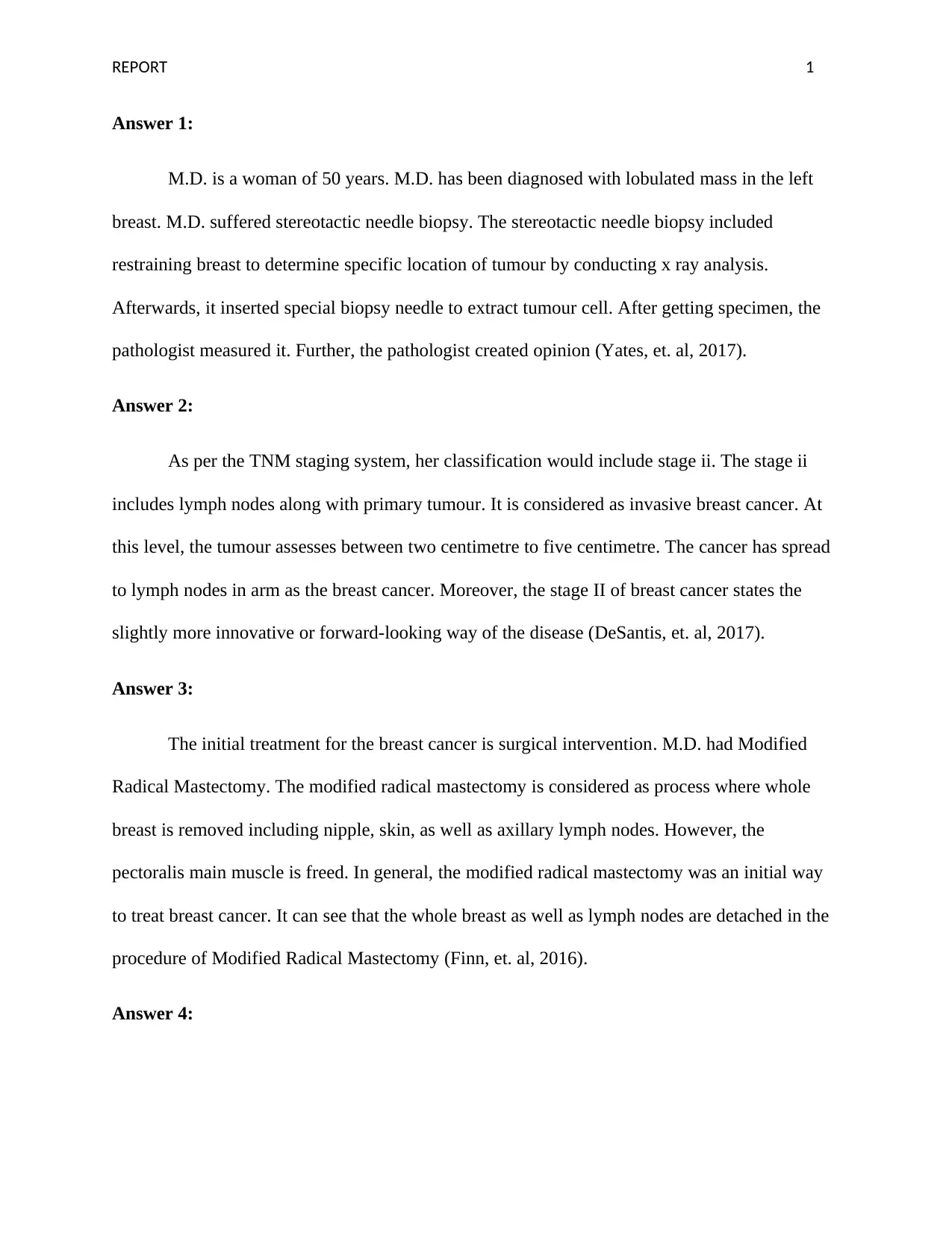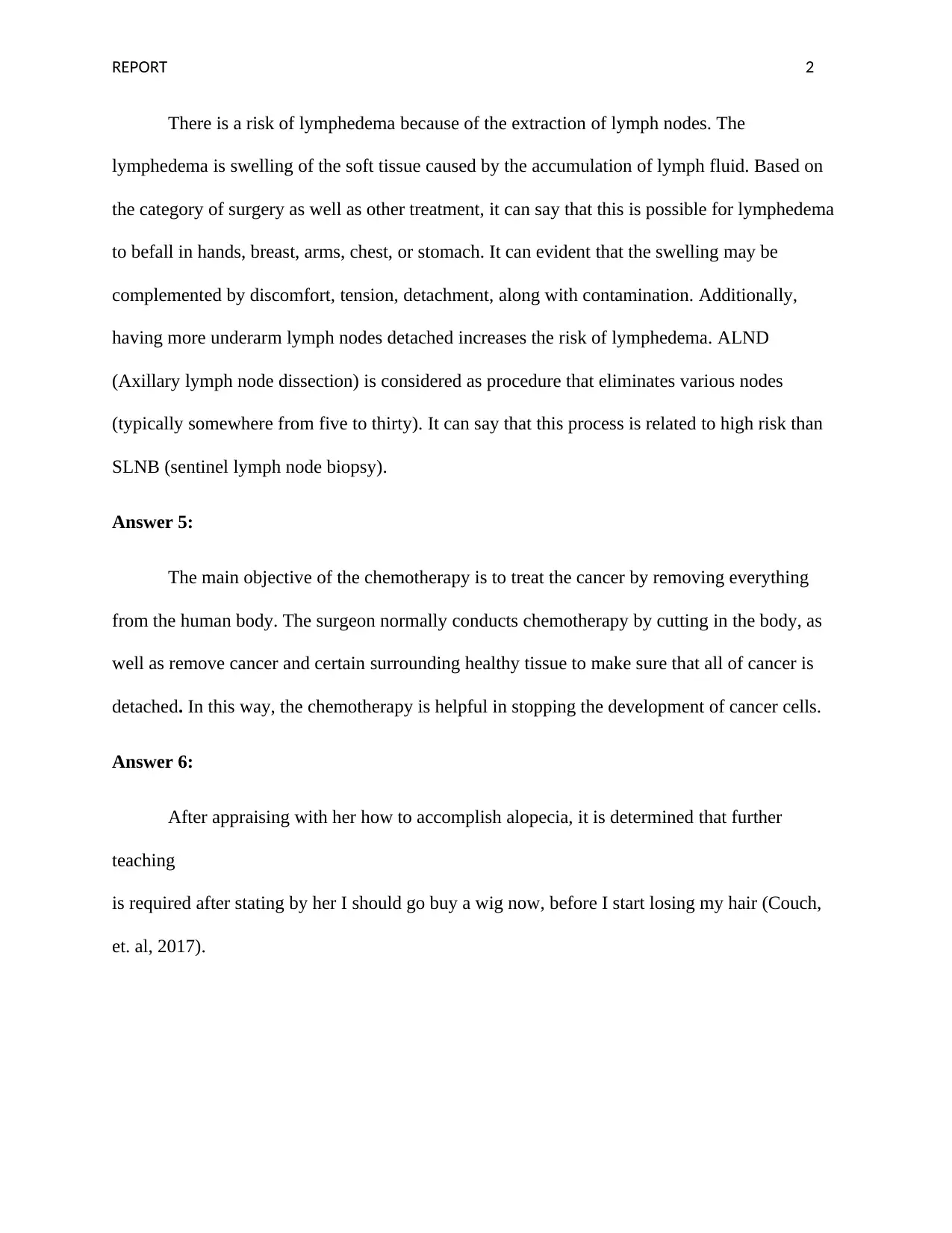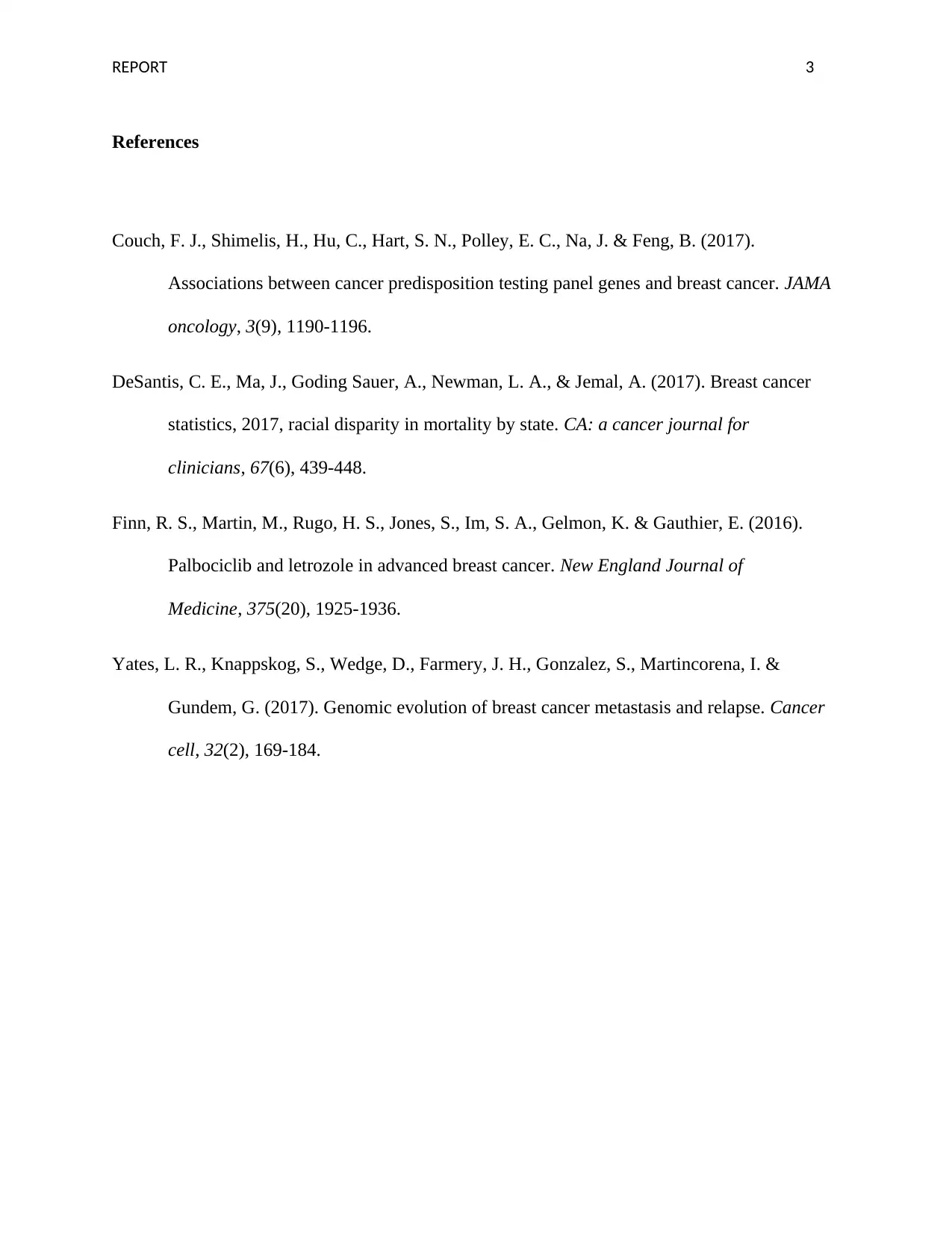Healthcare Case Study: M.D.'s Breast Cancer Diagnosis and Treatment
VerifiedAdded on 2022/08/18
|4
|791
|17
Case Study
AI Summary
This case study report focuses on a 50-year-old woman, M.D., diagnosed with infiltrating ductal carcinoma in her left breast. The report details the diagnostic process, including a stereotactic needle biopsy, and the TNM staging system, classifying her cancer as stage IIB. M.D. underwent a modified radical mastectomy with lymph node dissection. The report addresses the risk of lymphedema, a potential complication of the surgery, and discusses the rationale for chemotherapy, including the use of CAF (cyclophosphamide, fluorouracil, and doxorubicin). The case study highlights the importance of patient education regarding chemotherapy side effects, such as alopecia, and the need for further teaching. The document analyzes the surgical intervention, chemotherapy regimen, and potential complications associated with breast cancer treatment.
1 out of 4






![[object Object]](/_next/static/media/star-bottom.7253800d.svg)